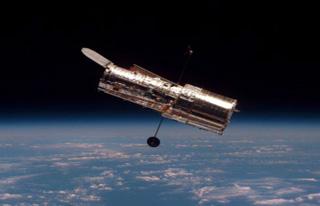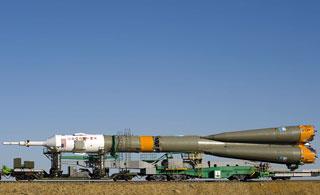
Hubble Space Telescope. Photo by: NASA.
WASHINGTON (BNS): A team of astronomers recently discovered that quasars emitted massive blasts of radiation in the early Universe, essentially delaying the growth of dwarf galaxies by as much as 500 million years.
The team used the new capabilities of NASA's Hubble Space Telescope to probe the invisible, remote universe.
With the help of newly installed Cosmic Origins Spectrograph (COS) they have identified an era, from 11.7 to 11.3 billion years ago, when the universe stripped electrons off from primeval helium atoms -- a process called ionization.
This process heated intergalactic gas and inhibited it from gravitationally collapsing to form new generations of stars in some small galaxies. The lowest-mass galaxies were not even able to hold onto their gas, and it escaped back into intergalactic space.
Michael Shull of the University of Colorado and his team were able to find the telltale helium spectral absorption lines in the ultraviolet light from a quasar, according to a NASA news release.
Quasar is a very energetic and distant galaxy with an active galactic nucleus. They are the most luminous objects in the universe. Quasars were first identified as being high redshift sources of electromagnetic energy, including radio waves and visible light, which were point-like, similar to stars, rather than extended sources similar to galaxies.
The universe went through an initial heat wave over 13 billion years ago when energy from early massive stars ionized cold interstellar hydrogen from the big bang. This epoch is actually called reionization because the hydrogen nuclei were originally in an ionized state shortly after the big bang.
The astronomers determined that it would take another two billion years before the universe produces sources of ultraviolet radiation with enough energy to reionize the primordial helium that was cooked up in the big bang. Such radiation came from supermassive black holes.
The helium's reionization occurred at a transitional time in the universe's history when galaxies collided to ignite quasars. After the helium was reionized, intergalactic gas again cooled down and dwarf galaxies could resume normal assembly.
At present, Shull and his team only have one perspective to measure the helium transition to its ionized state. However, the COS science team plans to use Hubble to look in other directions to determine if helium reionization uniformly took place across the universe.
 Previous Article
Previous Article Next Article
Next Article












The Indian Air Force, in its flight trials evaluation report submitted before the Defence Ministry l..
view articleAn insight into the Medium Multi-Role Combat Aircraft competition...
view articleSky enthusiasts can now spot the International Space Station (ISS) commanded by Indian-American astr..
view article